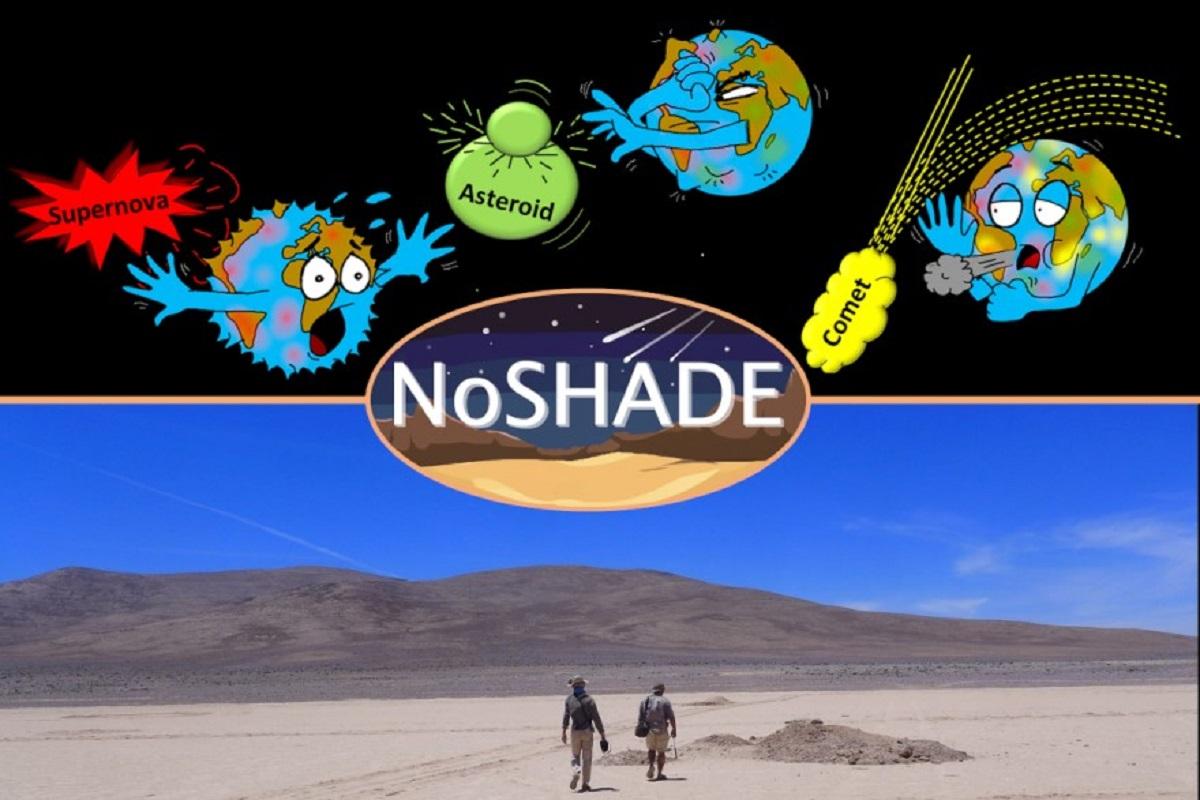In the interdisciplinary NoSHADE project funded by the European Research Council (ERC), Dr. Jenny Feige and her team are investigating the history of our solar system using sediments in the driest and oldest desert in the world, the Atacama Desert.
Throughout Earth’s history our planet was subject to cosmic tempers that occasionally impacted global climate and biological evolution but almost always left their traces behind. Individual large impactors leave craters as footprints. Cosmic events in our Solar System, such as asteroid collisions or cometary sublimation, eject vast amounts of interplanetary dust particles, which also encounter Earth, but more quietly. They become part of sedimentary records in the form of micrometeorites or dispersed as atoms if evaporated during atmospheric entry. Furthermore, within our solar neighbourhood (50-150 pc) tens of star explosions, i.e., supernovae, occurred within the last >10 Myr. Their expanding shock fronts containing interstellar dust swept across our Solar System and a small but measurable fraction made its way to Earth. The overarching goal of NoSHADE is to collect traces of cosmic dust from Atacama Desert sedimentary records reaching back >10 Myr and link them to specific cosmic events. The main cosmic traces to be investigated are micrometeorites as well as radionuclides derived from interplanetary and interstellar dust (10Be, 26Al, 53Mn, 60Fe), which will be measured using the most advanced accelerator mass spectrometry (AMS) facilities available worldwide. Such an unprecedented >10 Myr-spanning record of multiple cosmic tracers will allow NoSHADE to shed light on two central and pressing questions: What was the quantity, timing, location, and type of supernovae having occurred in our solar neighbourhood? Which were the major dust-producing events and processes having taken place in our Solar System? The answers to these questions are not only fascinating by themselves and tell us what kind of dust and debris Earth encountered in space over the past Myr, but they will also allow to clarify if cosmic tempers during the last >10 Myr had an impact on Earth’s history and potentially altered the climate or the path of biological evolution.
The NoSHADE Team
Senior Scientists and Postdocs
Dr. Jenny Feige
Dr. Alessandro Airo
Dr. Christof Sager
PhD Candidates
Klemens Kirsch
Benedikt Maurer
Master and Bachelor Students
Josephine Anderson
Carl Fenski
Pouria Karami
Andrea Miedtank
Volunteers
Christopher Bajerski
Felix Mauke
Cara Weihe
Previous Group Members
Franziska Schwonke
